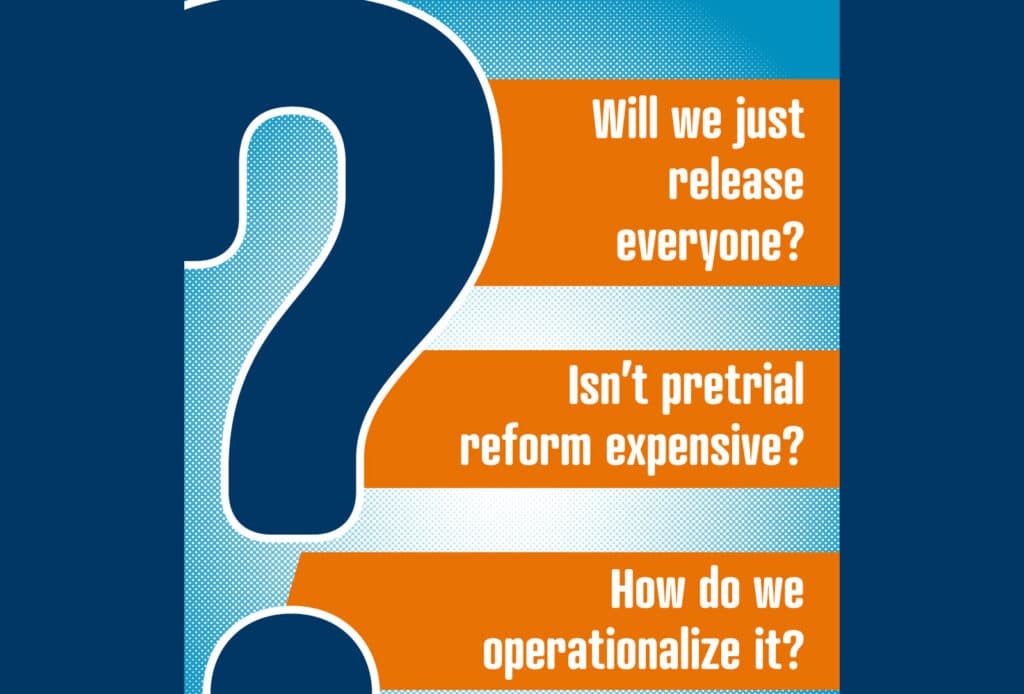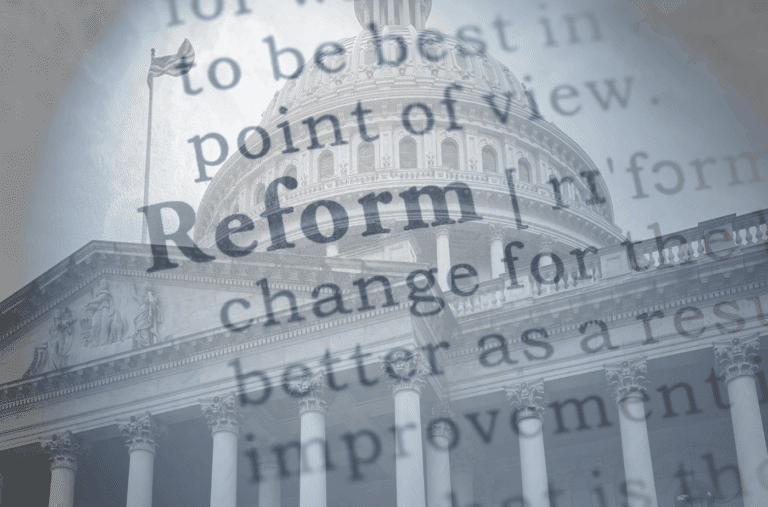The Northpointe Suite • An equivant product
“HOLD ON, I HAVE TO ASK…”
WE ANSWER 3 OF YOUR BURNING QUESTIONS ABOUT PRETRIAL REFORM
In the last few years, pretrial reform has accelerated to an almost breakneck speed. The traditional practice of setting monetary bail based strictly on a person’s current criminal charges and their criminal history is shifting to practices that look for alternative ways to handle pretrial decisions based on a person’s risk level. Those who work in corrections are wondering how to navigate a system that will no longer rely on money bail.
Let’s take a look at the top questions around the changes in pretrial from coast to coast, and what this may mean for you.
1. WILL WE JUST RELEASE EVERYONE?
Of course not. It’s important to remember why bail practices existed in the first place: to help ensure people do not pose a risk to the community, and to maximize court appearances. Unfortunately, the pre-reform bail system struggled in addressing these goals while keeping detainee levels under control. Many were detained that couldn’t pay the bail that was set, and of those that did post bail, the failure-to-appear rates remained a concern. Ability to pay did not equate to a person’s risk level – thus, the public safety element was not truly addressed on a case-by-case basis. Since the system was primarily money-driven, a wealthier person would have the ability to “buy their freedom” even though they may pose a greater risk. An income-challenged person who committed a comparatively minor offense could potentially sit in jail for months, or even years, before trial. Incarceration rates for those with a pretrial status grew over time, and the impact was significant to people, communities, and institutions.
In this new era of reform, validated risk assessments lead the way. With the help of these time-tested assessments, paired with our own experienced judgment, we can now determine with greater accuracy which individuals should be detained before their trial and which could be released, possibly with ongoing supervision conditions. Risk, not income, is the primary factor that supports the courts’ final decisions on who is incarcerated and who is released. These reforms aim to release people who do not pose a threat to their communities, or risk missing their court date. Risk-based decisions will identify those individuals that pose higher threats based on objective data factors only.
2. ISN’T PRETRIAL REFORM EXPENSIVE?
Change invokes pushback, and it may seem like pretrial reform will place a new financial burden on agencies. Processes will need to be reviewed, and jurisdictions will need to decide how best to implement the change. In truth, the cost of incarcerating people has taken an excessive financial toll. One study estimated the annual cost to detain a single inmate is $22,650 (though it varies between states and can be much higher). By contrast, in the federal system, pretrial release programs spurred on by these reforms and supported by validated risk assessments cost $3,100 to $4,600 per person. The reality is that by moving forward with pretrial reform, costs can decrease for taxpayers by a whopping 86%.
3. HOW DO WE OPERATIONALIZE IT?
Pretrial reform sounds great in theory, and moving away from money bail is largely accepted as the right thing to do – but questions swirl in regards to how to implement evidence-based practices. The good news is that agencies across the country have successfully incorporated these reforms by adopting a validated risk assessment, defining and refining workflows, consulting with industry leaders, attending training, and utilizing resources available within the pretrial community. Using a platform like the Northpointe Suite provides a library of validated assessments for agencies to choose from, while delivering solutions for pretrial recommendation reports, supervised release, and ad-hoc reporting, all stored in one system and accessible by stakeholders in pretrial services, the jail, the prosecutor’s office, and the courts.
Change can seem overwhelming. Questions and concerns about this new era in pretrial will no doubt continue to receive a great deal of attention. It’s important to keep in mind that the changes are designed to make our communities safer, defray costs to taxpayers, and provide fairer treatment of people regardless of their ability to pay. A critical key to success is a tested system led by practitioners who can help provide guidance for a streamlined solution. Pretrial reform is big. Your decisions are bigger. We can help.
To learn more about bringing validated risk and needs assessments to your agency, contact us.






